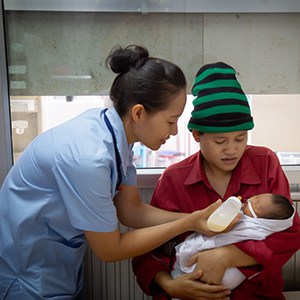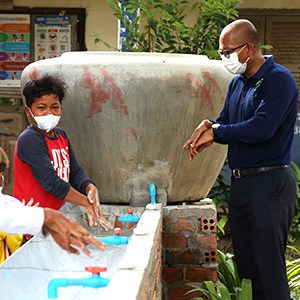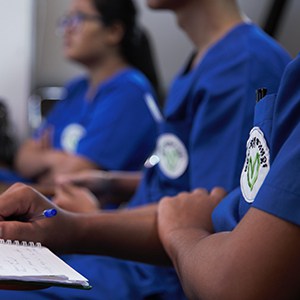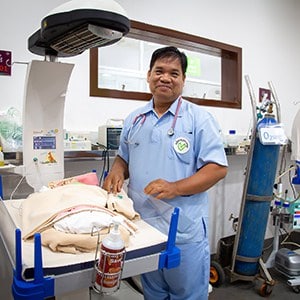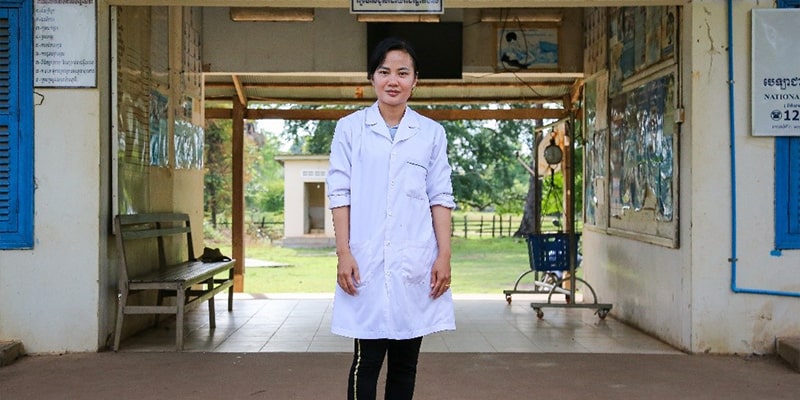It is a typically busy morning at Rovieng Health Centre in Preah Vihear Province; dozens of motorbikes are parked outside and many mothers and children sit beside the designated obstetrics, antenatal and delivery room building. That previous night, three babies had been born, adding to the buzz of activity. The SBL team has been visiting the health centre every month since the Saving Babies’ Lives (SBL) programme started, to train the staff on neonatal healthcare.
Rovieng plays an important role in the province’s healthcare because of the large population reliant on its services, its distance from the main referral hospital, and the high number of births delivered each month. Rovieng is also one of the four pilot health centres participating in the SBL programme.
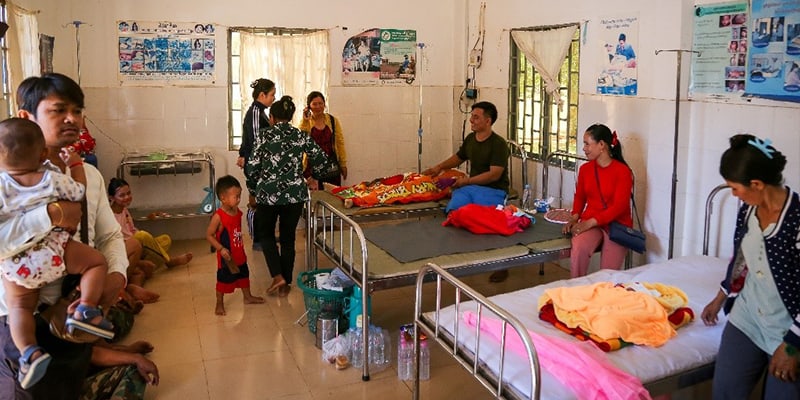
The SBL team briefly halted operations in April and May 2020 due to the global COVID-19 pandemic, but the team are back following months of no community-transmitted cases of COVID-19 in Cambodia. The standard of care continues to improve with each visit from the team despite the pandemic.
“We were happy to see the staff here had kept up their training while we were gone,” says Saradeth Pun, the SBL Officer leading training and mentorship of Rovieng Health Centre. “They are continually making sure their workplace is clean and hygienic, especially before births, which was not the case when we first arrived.”
On this month’s visit, Saradeth is teaching correct intravenous administration of antibiotics when a sick neonate requires urgent transferring to the Preah Vihear Referral Hospital. Rovieng Health Centre is located over 1.5 hours’ drive from the referral hospital, meaning correct transfer of sick neonates is a crucial procedure for the health centre staff to follow.
“There have been many positive developments in the transfer procedures,” says Saradeth. “Last month a baby was quickly identified as having neonatal sepsis and transferred on time to receive treatment at the referral hospital. That same baby is here today for a follow up appointment and is in good health.”
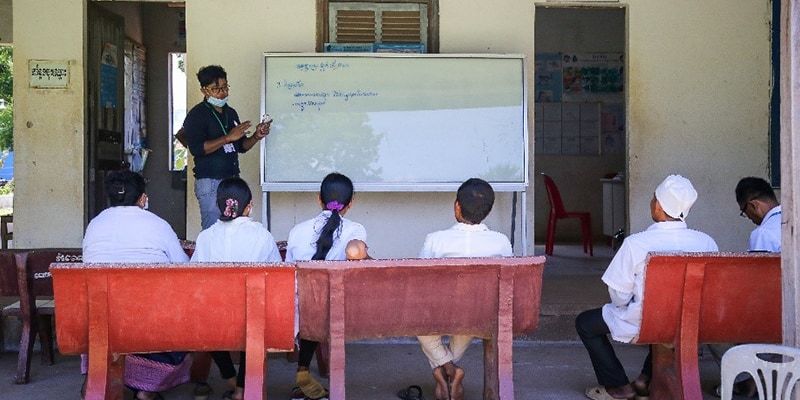
To date, 18 health workers at Rovieng have received training from the SBL team. They have completed the first stages of neonatal resuscitation, routine neonatal care, infection prevention and control, recognition of a sick newborn, and are now training their own staff these same skills.
Sim Chanmetrey is one of the dozen midwives working at Rovieng Health Centre since 2015. Her team delivers approximately 30 babies per month, the highest of any health centre in Preah Vihear.Some of the babies born here require urgent care like emergency resuscitation. Chanmetrey recalls her own difficulty caring for newborns before she began SBL training, “I was always nervous to perform resuscitation on a baby. I wasn’t sure what pressure I should apply so I usually applied more than necessary.”
Chanmetrey has been a regular attendee at SBL training sessions since the programme began. She was selected as one of the ToTs (Training of Trainers) for Rovieng because of her commitment, motivation, and enthusiasm. Recently, she has been familiarising herself with the BaRT system, which the SBL team introduced to the health centre in June. BaRT teaches health workers how to resuscitate a neonate by measuring air pressure and pace delivered on an app, giving them real-time feedback when they are performing resuscitation.
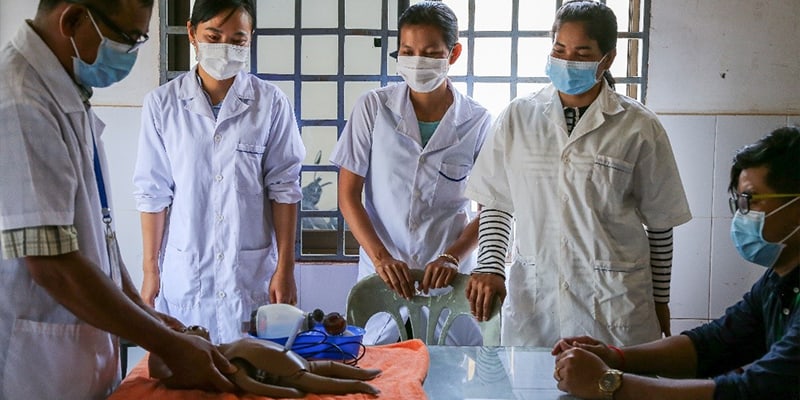
Each week Chanmetrey meets with her fellow midwives to train them on the BaRT system. Last week she had to use her BaRT training when a baby stopped breathing shortly after birth. “I called on my training; the pressure and the pace to squeeze the bag, and the correct position of the mask around the baby’s mouth,” recalls Chanmetrey. “After squeezing the bag for some long moments, the baby started breathing again. I was pleased that I acted so quickly and confidently.”
Rovieng Health Centre has now entered the final stages of the mentorship programme. This means the SBL team only visits one day per month with Chanmetrey, and the other two ToTs at Rovieng, leading the majority of training. “The team here (at Rovieng) continues showing us examples of their improvement,” says Saradeth. “It shows in the statistics but also in the cases we are seeing of sick babies being saved.” Ultimately, the team at Rovieng will have the skills and knowledge needed to continue improving neonatal healthcare in their area without the need for the SBL teams guidance.
